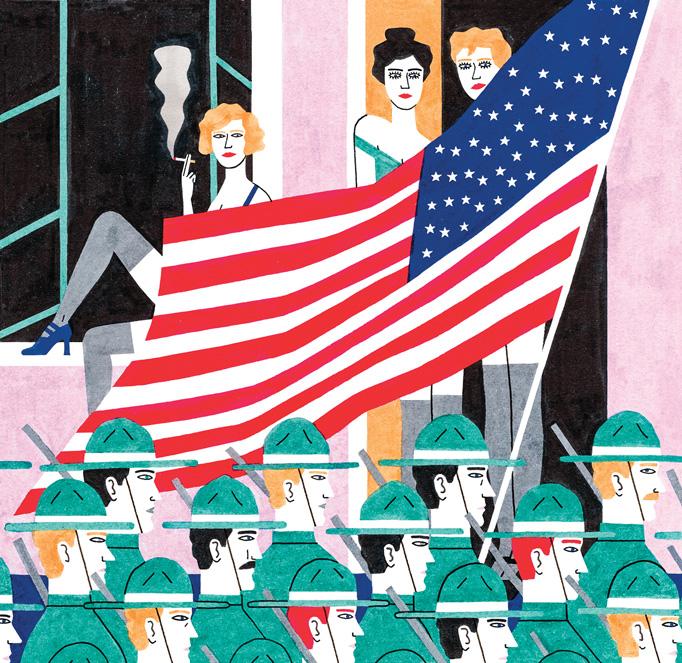
American exceptionalism, the historian Eva Payne argues, had sexual dimensions.
On Christmas Day in 1872, the atmosphere was restive among the forty female residents of a medical institution on the outskirts of St. Louis. The women were patients, not prisoners, so they wondered why they were obliged to spend the holiday as they would any other day: confined to their wards, knitting or chatting, without music or revelry of any kind. Half a dozen of the boldest ones took it upon themselves to defy the steward and the matron, and to circumvent the gatehouse guards, who were ostensibly there to prevent undesirable visitors. The women made a break for more entertaining precincts downtown, "bent on a regular old-fashioned "bender,'" as the Missouri Republican reported at the time. But the authorities quickly tracked them down. Four of them were brought back to the institution, while the remaining twoperhaps in an unruly state of intoxication-were, as the newspaper dryly put it, "left in the calaboose to ruminate upon the inscrutable ways of Providence and the police."
The institution from which the women escaped was the Social Evil Hospital, an isolation hospital for female sex workers who had tested positive for sexually transmitted diseases. The hospital had been discreetly established in the suburbs of St. Louis the previous year, as part of an innovative attempt to regulate prostitution in the city. The furnishings of the main building, where white women dwelled, were tasteful and comfortable, albeit sparely decorated. Black women were quartered separately, on the second floor of the gatehouse. The food was plentiful if plain: no oysters were served in the dining room, to the annoyance of the residents. They also chafed at the rule against smoking, and regretted the absence of a common room. Largely, though, they were reportedly more or less satisfied with their environs.
This story is from the December 16, 2024 edition of The New Yorker.
Start your 7-day Magzter GOLD free trial to access thousands of curated premium stories, and 9,000+ magazines and newspapers.
Already a subscriber ? Sign In
This story is from the December 16, 2024 edition of The New Yorker.
Start your 7-day Magzter GOLD free trial to access thousands of curated premium stories, and 9,000+ magazines and newspapers.
Already a subscriber? Sign In

ART OF STONE
\"The Brutalist.\"

MOMMA MIA
Audra McDonald triumphs in \"Gypsy\" on Broadway.

INTERNATIONAL AFFAIRS
\"Black Doves,\" on Netflix.

NATURE STUDIES
Kyle Abraham's “Dear Lord, Make Me Beautiful.”

WHAT GOOD IS MORALITY?
Ask not just where it came from but what it does for us

THE SPOTIFY SYNDROME
What is the world's largest music-streaming platform really costing us?

THE LEPER - LEE CHANGDONG
. . . to survive, to hang on, waiting for the new world to dawn, what can you do but become a leper nobody in the world would deign to touch? - From \"Windy Evening,\" by Kim Seong-dong.

YOU WON'T GET FREE OF IT
Alice Munro's partner sexually abused her daughter. The harm ran through the work and the family.

TALK SENSE
How much sway does our language have over our thinking?

TO THE DETECTIVE INVESTIGATING MY MURDER
Dear Detective, I'm not dead, but a lot of people can't stand me. What I mean is that breathing is not an activity they want me to keep doing. What I mean is, they want to knock me off. My days are numbered.